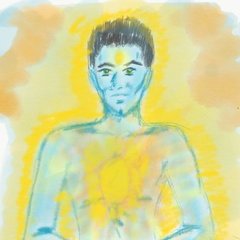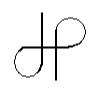Search the Community
Showing results for tags 'Stillness'.
Found 6 results
-
Hello, again. https://songofthedao.substack.com/p/on-stillness
-

The role of knowledge in spirituality and the destruction of the mind
dwai posted a topic in Hindu Discussion
Most of us here have a practical background, having spent many years in the practice of a meditative method or art (e.g., qigong, yoga, taijiquan, etc). It is true that having a practice is essential for growth and learning. And yet, many seem to gloss over the role of knowledge. There are two kinds of knowledge -- one that is taught to us by another (such as a teacher, friend or some other medium -- book, etc). Let us call this "external knowledge" or "indirect knowledge". The other is the knowledge that is directly known -- usually as a result of a regular and diligent practice of the method of our choice. Let us call this "internal knowledge" or "direct knowledge". I've seen many practitioners of spiritual arts scoff at the external knowledge because it is considered somehow inferior to the "directly" known, internal knowledge that is supposed to be the fruit of our (glorious/valiant/heroic/add your own adjective here) efforts. And yet, we would not have embarked upon the path of our choice if we didn't have an external source of knowledge to guide us throughout our journey. It is quite possible that some people, due to their karmic influence are easily able to enter into deep meditative states. But that may not result in full awakening, without proper initiation into the external knowledge. The reason being, when the deep meditative states (samādhi) are entered, there is no mind involved (or minimal mind is involved). While repeated immersion into these deep states can result in thinning of the modifications of the mind, the mind still remains functional once one exits from such states. In the vedantic tradition, the entry into samadhi is called "mano laya" (or pausing of the mind). This is considered an intermediate stage of spiritual evolution. Once the practitioner exits from the samadhi, the mind resumes its functioning (perhaps with not as much vim and vigor as it did prior, but it generally tends to gather steam and pick up from where it left off eventually). The only way to cause what in vedanta is called "mano nāsha" (mind cessation) is to deliberately and methodically work with the external knowledge (as taught by the teachers and texts) and go through a process of intellectual assimilation. The mind has four components, namely the ego, the thought field, the storehouse of memories and impression and the intellect. For knowledge to be integrated, it has to be worked on with the cooperation of the mind (ego-thought field-storehouse-intellect). Key among them is the intellect. Whatever the intellect identifies with, the ego will do its level best to protect/maintain that. If the intellect identifies with the body, the ego will strive to maintain that identification. If the intellect identifies with the mind, ego will strive to maintain that identification. Therefore, the intellect needs to come onboard with the process of spiritual development. Once the intellect is onboard, all the other components of the mind will follow its lead. So with the study and contemplation on the external knowledge using the intellect, the intellect needs to be convinced of its 'place' in the grand scheme of things. When the intellect understands completely that it is merely a function of the mind, and that the mind is nothing but a process arising in awareness, the intellect will gradually relinquish its need to identify with anything. It might initially start by giving up identification with the body and the mind. Typically the intellect latches onto the idea of being "The Non-dual Self/Awareness". And it is a far better proposition that being identified with the body/mind. Then the seeker wants to constantly abide in this "non-dual awareness". Of course, life usually has other plans, so the feeling of non-duality, and the feeling of duality keep coming and going, oscillating between the two phases at regular intervals. This leads to great frustration in the intellect of the practitioner. And then one day the realization occurs, that what we truly are, is aware of both the duality and non-duality that seems to arise in the mind. And on that day, the intellect gives up completely, and the ego disappears, as it has nothing to defend anymore. This results in a fully non-grasping mind, essentially a mind that has ceased to operate as it used to before spiritual practice started. And therein is the direct knowledge or internal knowledge, which is nothing but that which is aware of both the apparent duality and non-duality.- 3 replies
-
- 8
-

-

-
- nonduality
- advaita
- (and 4 more)
-
This is a very good video series explaining some basic errors that can be met while trying to engage in practical Daoist meditations. The first video is a great summary even for experts. The best benefit however is for self-initiates and newbies who are often clueless where to begin and whether they can safely practice on their own. The answer to that is: it depends on many conditions chiefly involving health and the purity of mind, but being too sure of oneself can spell disaster. Deviations are not fun and can take a long time to heal, yet very often we can witness on this forum also how people have casual disregard for their own well-being. As if they were completely immune to any shortcomings and mistakes, and as if mastery was attained with the snap of fingers! It's good to be informed that these deviation conditions exist. Teacher who can observe and help you correct yourself before unwitting mistakes and errors escalate into sickness is baseline for great teaching skill. Video 1: Video 2: Video 3: Video 4: Video 5:
- 15 replies
-
- 11
-

-

-
- deviation
- qi deviation
- (and 22 more)
-

A diagram from the Zhongho ji
Old Student posted a topic in Miscellaneous Daoist Texts & Daoist Biographies
Here is a diagram from page 30 of the Zhonghe ji (中和集). http://repository.lib.cuhk.edu.hk/en/item/cuhk-44970#page/31/mode/2up (I couldn't get the image jpeg to load, it is a jpeg on the page but TDB's loader doesn't like the URL). The diagram has two parts, the right hand part is called, "verbal formula" (口訣) the left hand part is called "metaphor" (譬喻). On the right are three steps, at the bottom is the trigram kan (坎). On either side, it says, "When the body doesn't move, the jing coalesces/strengthens." (身不動,精自固). Then at the top, is the trigram li (離). On either side, it says "When the heart/mind doesn't move, the qi coalesces/strengthens." (心不動,氣自固). There are 2 lines coming from the center lines on each trigram to right under the other, the one going from kan to li has a wu (戊) the 5th tiangan (celestial stem), the one going from li to kan has a si (巳) the 6th dizhi (earthly branch). On either side of the center it says daogui (刀圭) which means a tiny pinch (of medicine). Then the central trigram is qian (乾). On either side, it says "When the intent doesn't move, the shen spiritifies." (意不動,神自靈) or maybe, in keeping with leaving Daoist concepts transliterated, "the shen ling-ifies". On the left (metaphor) side, there are three corresponding circular diagrams representing the same thing: At top a white circle with black center (li), in the center a white circle (qian), and at the bottom a black circle with white center (kan). On the kan circle, above it, it says, "refine jing transmutes to qi" (錬精化氣) and on either side it says, "Inside the body is jing, inside yin is yang." On the li circle, above it, it says, "refine qi transmutes to shen" (錬氣化神) and on either side it says, "Inside the heart/mind is qi, inside the yang is yin." The center circle says "yuan shen" (元神). Above and below, it says, "refine shen returns to emptiness" (錬神還虛). Each thing that must be refined and transmuted is done so by keeping the thing that holds it still. To transmute jing, this is the transmutation of kan, yang within yin, which is the jing within the body, it changes when the body is kept still. To transmute the qi, this is the transmutation of li, yin within yang, which is qi within the heart/mind, it changes when the heart/mind is kept still. To transmute shen, this is the transmutation of qian, the yuan qi, it returns to emptiness (shen becomes ling) when the intent is kept still. I have two questions: 1) 神自靈. Ling is used as a verb, I think here it means that the spirit of the corporeal person becomes the ethereal spirit (returns to emptiness)? 2) Is it refining (bodily/after heaven) jing becomes original qi refining original qi becomes original shen (original being 元)? Or is it refining bodily jing becomes original qi, refining bodily qi becomes original shen, refining shen becomes ling and returns to emptiness? This is one of my favorite diagrams, I like the holding things still makes them change thing. -
There was a time, some years ago, when I had a need to have a conversation with a certain person. As a private conversation, it had to be undertaken in a place that was not where he lived, where he worked, or where he went when he was not working; it had to occur on the way that he would travel between these places. The reason for the conversation, the details of it, and the consequences to the person beyond it are of no consequence to this story, it is a story of an experience. Along a path that the person was known to take, beside the trail with it's rocks and bushes, overlooking a small forested area, I found a place to wait. I did not know when the person would come this way, only that he would, in time. I settled in beside a bush, and focused my mind upon stillness. In order to remain undisturbed, I set my mind to be like that of a rock: unmoving, undisturbable, unremarkable. As time went on, people walked by. Some looked in my general direction, but I noticed that they did not see ME, or the "I" that is me ... they only saw a rock sitting beside a bush. All of myself, my clothing, my body, my kit, my tools .. only percieved as a rock beside a bush. No great wonder to myself, for after the first few hours of sitting, the desire to move had all but gone, the presence of musculature and mode of motion had all but fled from the conciousness. The illusion of time had been so contracted, that a moment and an hour were nearly imperceptible. The sun traveled( oh, illusion!) in it's arc, and as twilight began to set in, a spider dropped from the bush to the top of the rock that was I. To the spider, I was a permenant feature, or at least unlikely to move, and so she began to go about her business, spinning a web. The concerns of the spider, where her thoughts were, were so simple; squeeze here, relax there, follow the pattern so ancient and ancestral to her nature. In the pattern and the following of it laid the key to continued survival; the web spun, the insects caught, the meal consumed ... one day, she would mate and lay her eggs, but not now. Observing the spider, I could have easily reached out and flicked her away. Squashing her fragile body between my fingers would have been no heroic feat - but I was a rock, imobile of my own nature, and so she finished her work. For a time we were as one, the spider and I. Both waiting, both waiting. A life, a destiny, a meeting; chance, but not by chance. Life taken and life preserved, life continuing. When I arose to complete my purpose, the tearing of the web seemed the greatest violence.
-
Hey everyone I should be getting my DVDs this week Can anyone that works this system please share what they have gained and exp doing this long term? Also how do you work both the Stillness and the moving form together ? I am enjoying the stillness meditation lots of movement and heat and shaking... I can feel thickness and magnetic feeling with some slight heat in my Dan Tian area today . Thanks for any insights and updates you all can share. Peace Jedi777

.thumb.jpeg.476badc76a6f0472a8c03bf397852004.jpeg)


